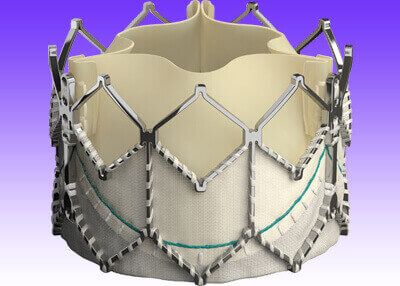The use of surgical bioprostheses has significantly increased, and while they last 15 years or more, in cases where they fail (usually due to stenosis), the decision-making process is challenging.

Transcatheter aortic valve replacement (TAVR) is a good alternative for this situation, although information on the subject matter is still scarce. Currently, the only available evidence comes from two retrospective studies using propensity score matching, and other minor studies.
Researchers conducted a meta-analysis including 11 studies with high- and intermediate-risk patients. Overall, 8570 patients were included: 4224 underwent V-in-V, while 4346 had a surgical aortic valve replacement (reSAVR).
The primary endpoint (PEP) was all-cause mortality at 30 days and during follow-up.
Mean age was 76 years old for patients undergoing V-in-V and 71 years old for patients undergoing reSAVR. Most patients were male (60%).
Patients who underwent V-in-V had higher rates for coronary disease prevalence, myorcardial revascularization surgery, and history of heart failure, renal failure, and chronic obstructive lung disease.
Read also: Left Atrial Appendage Closure Is Safe with the New Devices.
In 49.6% of cases, balloon-expandable valve was used, while self-expanding valves were used in 45.8% of patients.
The PEP was significantly lower in V-in-V (odds ratio: 0.43, 0.29–0.64, and 0.44, 0.26–0.73, respectively), both in high- and low-risk groups at 30 days, but there were no differences in all-cause mortality or cardiovascular mortality at follow-up.
Within 30 days, there were no differences in stroke, pacemaker implantation or vascular complications, but major bleeding, new atrial fibrillation, and readmission rates were higher for patients who underwent reSAVR.
Read also: Ticagrelor Monotherapy: Valid after 12 Months?
In the V-in-V group at 30 days, there were no differences between high- or intermediate-risk patients in terms of stroke, infarction, and major bleeding.
In the mid-term follow-up, there were no differences in all-cause mortality and cardiovascular death between both strategies.
Conclusion
In patients at high- or intermediate-risk with surgical bioprostheses degeneration, V-in-V was associated with a reduction in short-term mortality compared with reSAVR. However, no differences were found in terms of all-cause mortality or cardiovascular mortality at mid-term follow-up.

Dr. Carlos Fava.
Member of the Editorial Board of SOLACI.org.
Reference: Francesco Bruno, et al. Catheter Cardiovasc Interv. 2022;100:122–130.
Subscribe to our weekly newsletter
Get the latest scientific articles on interventional cardiology





